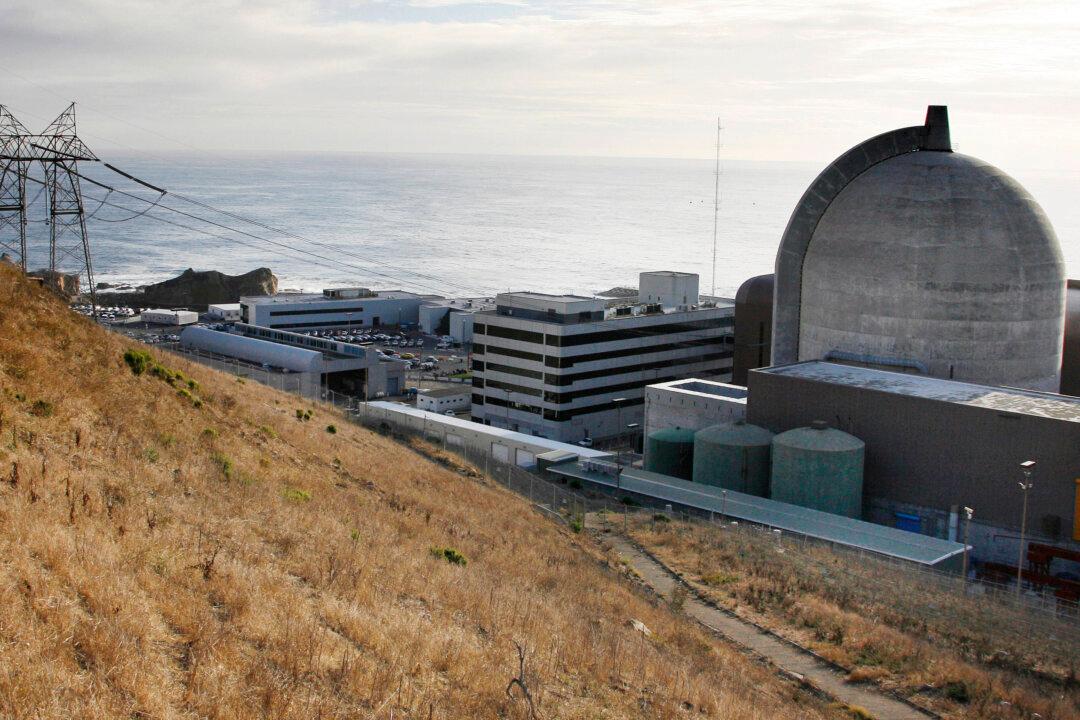WASHINGTON—Federal regulators have been too slow and lax when it comes to ensuring the safety of California’s last operating nuclear plant, according to Democratic Sen. Barbara Boxer, who clashed repeatedly with members of the Nuclear Regulatory Commission during a Senate committee hearing Wednesday.
Boxer said that the lessons of Japan’s Fukushima nuclear disaster more than three years ago have not been taken to heart nearly enough at Diablo Canyon, where new seismic faults have been discovered since the plant was constructed decades ago. Boxer pointed out that a senior federal expert has urged the NRC to shut down the plant until the agency can determine whether the reactors can withstand shaking from any of the nearby faults.
Boxer said lax enforcement of seismic safeguards extends to other nuclear plants, too. She said the agency has yet to fully complete any of 12 key safety recommendations that a task force made in response to Fukushima more than three years ago.
The NRC’s outgoing chairman, Allison Macfarlane, told Boxer that nuclear plants in the U.S. are safer since Fukushima.
Some have built earthquake proof shelters to make sure reactors are protected. Plants have also installed new pumps and other equipment to deal with flooding. Two national response centers have been opened in the past six months — one in Phoenix and the other in Memphis — that can deliver emergency generators, hoses and other backup equipment to nuclear plants in distress within 24 hours.
Regarding Diablo Canyon, she told Boxer that the inspector the senator cited also acknowledged there was no “immediate” safety concern with the plant.
“They are in compliance with their license and we consider them safe to operate until we see new information that tells us otherwise,” Macfarlane said. “If we find new information that suggests they are not safe to operate, we will shut them down.”
Boxer seized on the contention that the NRC didn’t view the threat to the plant as immediate.
“Immediate is not good enough for this senator. Immediate is not good enough for the 500,000 people who live within 50 miles. Immediate. That’s what they said at Fukushima,” Boxer said.
The exchange between Boxer and commissioners came during a wide-ranging hearing of the Senate Committee on Environment and Public Works, which Boxer oversees as the committee chairman.
PG&E, which operates the Diablo Canyon plant, says it is being operated safely and is in compliance with its licensing requirements.
“In fact, recently completed advanced seismic research in the region further confirms the facility can withstand potential earthquakes on nearby faults,” company spokesman Blair Jones said.
Another hearing witness, a former California state senator, urged regulators to reassess seismic standards at Diablo Canyon’s twin reactors and determine if its operating rules are sufficient in light of earthquake risks.
“The potential earthquakes affecting the plant have increased with each major study. But what’s equally striking is that the shaking predicted by PG&E for these increasing threats has systematically decreased,” said Sam Blakeslee, a geophysicist who left the Legislature in 2012.
Blakeslee and Daniel Hirsch, a lecturer at the University of California, Santa Cruz, both expressed concerns that the lessons of Fukushima have not been learned. They said that’s critical in light of new research on shaking that could be generated on faults near Diablo Canyon.
“The big problems they aren’t even thinking about and the small problems they aren’t fixing. They are just hoping to get lucky,” Hirsch said of federal regulators.
In the 2011 Fukushima Dai-ichi disaster, the coastal complex suffered multiple meltdowns after an earthquake and tsunami destroyed its power and cooling systems. The magnitude-9.0 earthquake was far larger than had been believed possible.
Hirsch said that when Diablo Canyon was designed and granted a construction permit, PG&E and the NRC said there were no active faults within 30 kilometers of the plant. He said that at least four earthquake faults have been discovered in the vicinity since.
PG&E said the seismic region around the Diablo Canyon is among the most studied and understood in the nation and that the plant uses that information to make sure the plant is safe.
“We have more detailed information about how the site would respond in an earthquake than any other plant in the nation,” Jones said in a statement.
The Associated Press reported in August that a senior federal nuclear expert had urged the NRC to shut down the plant until it can determine whether the reactors can withstand shaking from any of several nearby faults. The agency rejected the recommendation from Michael Peck, who was the NRC’s lead inspector at the plant for five years.
Anthony Pietrangelo, a senior vice president for the Nuclear Energy Institute, a trade group, said it’s not unusual for the NRC’s staff to voice differing opinions on safety issues, and he took issue with any assertion that Peck’s warnings were ignored. “No one was silencing anybody,” Pietrangelo said.
Peck’s report says PG&E research in 2011 determined that any of three nearby faults — the Shoreline, Los Osos and San Luis Bay — are capable of producing significantly more ground motion during an earthquake than was accounted for in the design of important plant equipment.
An internal NRC review panel disagreed with Peck on key points, concluding that the three faults “do not exceed the level of ground motion already considered in the design and licensing” of the plant.
From The Associated Press
